From the iconic Giant Pandas to rare primate species and ancient forest dwellers, China is a haven for animal enthusiasts and nature lovers.
The country’s commitment to wildlife conservation has played a crucial role in protecting these incredible creatures for future generations. Let’s embark on a journey to discover the top 10 animals in China and learn about their unique characteristics, conservation efforts, and the importance of preserving their natural habitats.
1. Giant Panda – China’s National Treasure
The Giant Panda (Ailuropoda melanoleuca) holds a special place in people’s hearts worldwide, and it is China’s most famous animal. Endearing creatures with distinct black and white fur mainly inhabit the mountainous regions of Sichuan, Shaanxi, and Gansu. Giant pandas primarily feed on bamboo, and their diet is a remarkable example of specialization.
Despite being an iconic symbol, however, they face the hazard of losing their homes and habitats, as well as their origin and land. That is why conservation organizations and the Chinese government have significantly tried to protect and preserve the Giant Panda. These include establishing over 65 nature reserves in the country, implementing anti-poaching measures, and engaging in breeding programs. Through these initiatives, the population of Giant Pandas has gradually increased, providing hope for their long-term survival.
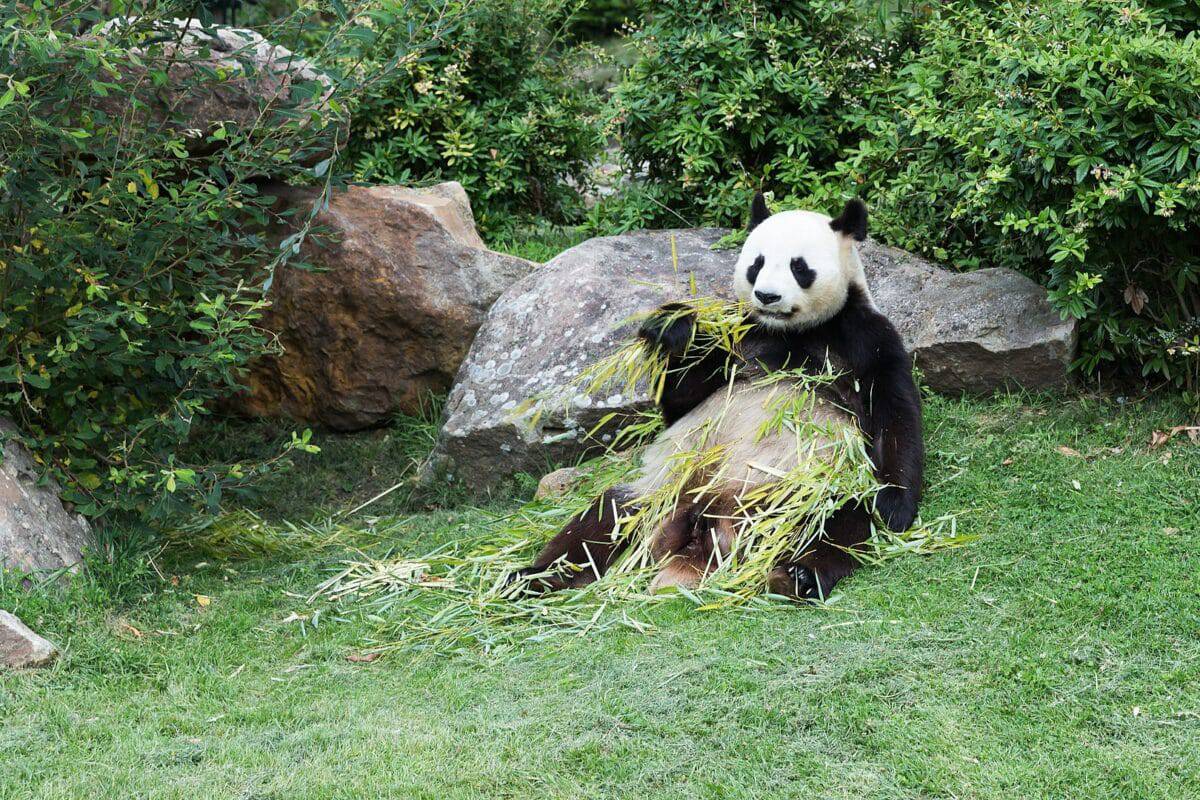
2. Golden Snub-Nosed Monkey
The Golden Snub-Nosed Monkey is a rare and fascinating primate species native to China’s mountain and highland regions. These monkeys (Rhinopithecus roxellana) have earned their famous appellation for their physical features: golden fur, snub nose, and enchanting blue faces. They live in complex social groups and primarily inhabit temperate forests.
For an assortment of reasons (including poaching and endangerment), the Golden Snub-Nosed Monkey is classified as an endangered species. Conservation efforts have focused on protecting their natural habitats, implementing anti-poaching measures, and raising awareness about their conservation needs. Ecotourism initiatives have also played a significant role in promoting the conservation of these remarkable primates.
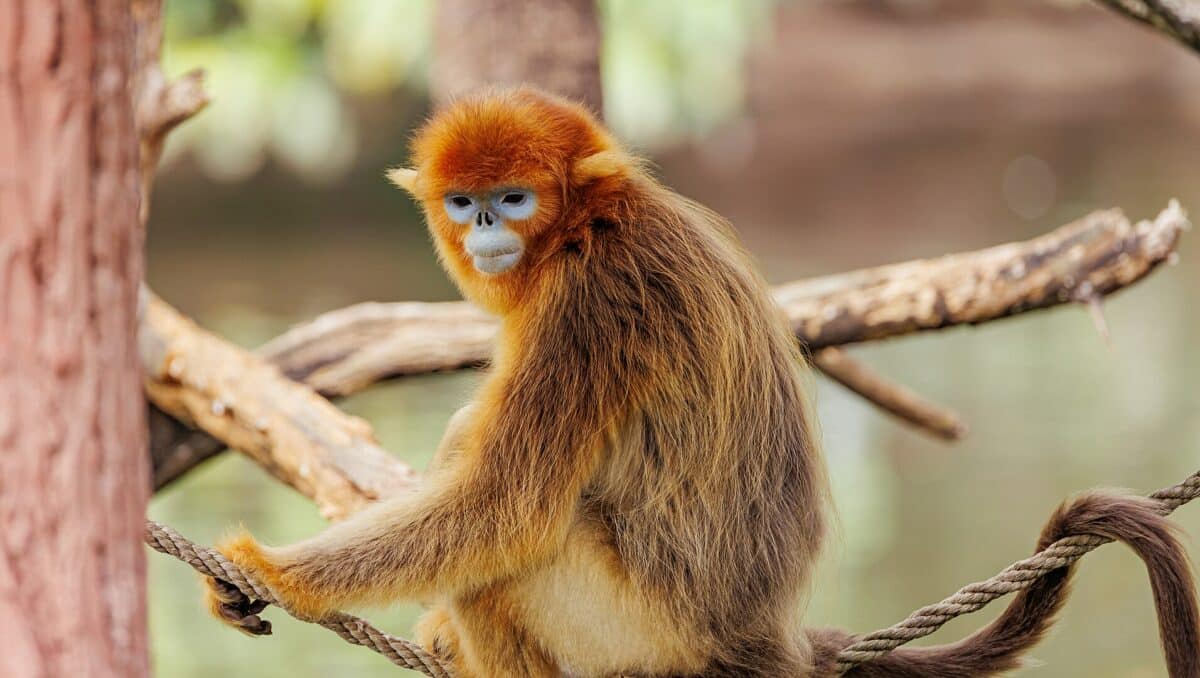
3. Tibetan Macaques
Tibetan Macaques (Macaca thibetana) are primates that have adapted to survive in the rugged landscapes of southwestern China. These monkeys inhabit mountain forests and have an exceptional ability to withstand cold temperatures. Tibetan Macaques have a unique social structure, living in large groups called troops, which consist of multiple family units.
Unfortunately, habitat loss and human activities threaten the Tibetan Macaques’ survival. Conservation efforts involve the establishment of protected areas and community-based conservation programs. These initiatives hope to preserve their habitats, reduce the proximity of humans and wildlife, as well as help humanity realize how essential it is to conserve these ancient forest dwellers.
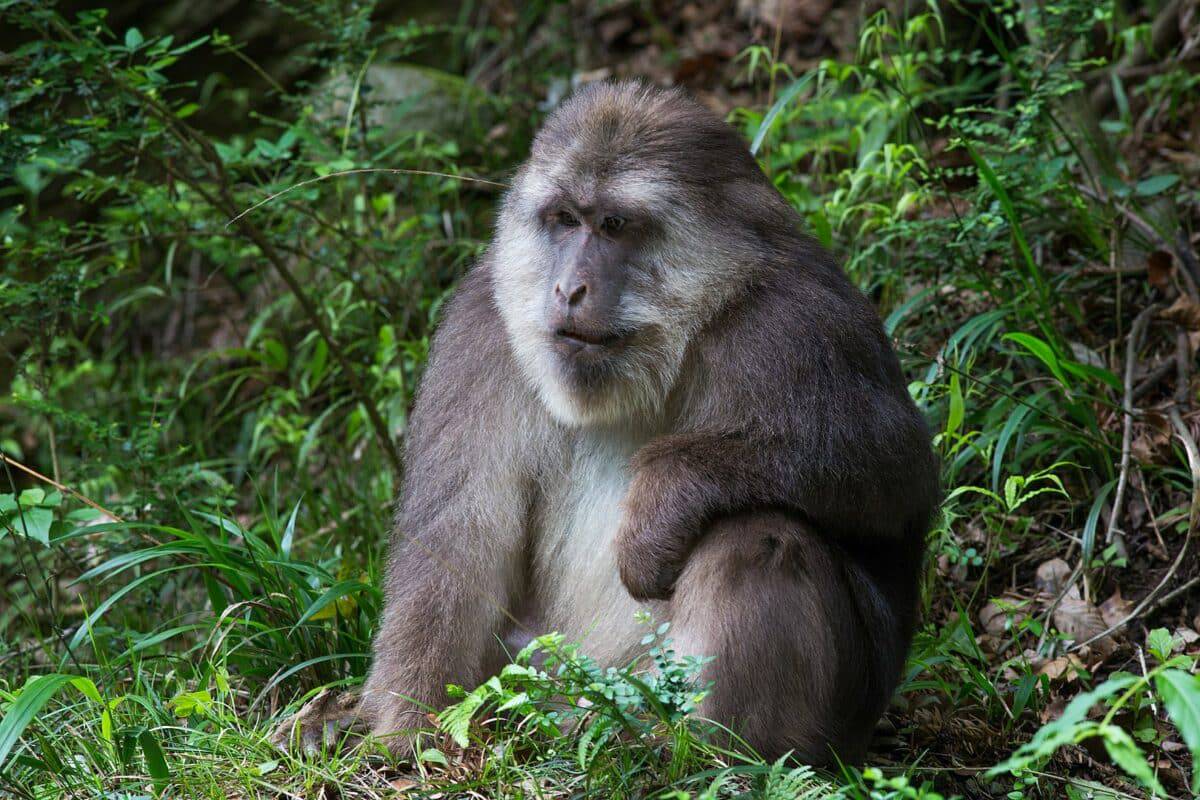
4. Chinese Sturgeon – The Living Fossil
The Chinese Sturgeon (Acipenser sinensis) is a remarkable species found in the Yangtze River, China’s longest river. These majestic creatures can grow up to 16 feet long and have a distinct, elongated body shape. The Chinese Sturgeon is an anadromous fish that migrates from the ocean to freshwater for breeding.
Unfortunately, the Chinese Sturgeon is critically endangered due to overfishing, habitat degradation, and dams blocking their migration routes. Conservation efforts focus on habitat restoration, the construction of fish passages, and artificial breeding programs. These initiatives aim to protect this ancient species and ensure its survival for future generations.

5. South China Tiger
This particular Tiger species (Panthera tigris amoyensis) is perhaps one of the imperiled subspecies in China. Once widely distributed across southern China, it is now nowhere to be found in the wild, and associations even apply the label of ‘extinct’ to their cousins in the wild.
Conservation organizations and the Chinese government have launched intensive breeding programs to reintroduce captive-bred South China Tigers into their natural habitats. These efforts aim to restore their population and address the factors that led to their decline, such as habitat loss and poaching. Protecting their remaining habitats and raising awareness about their conservation needs are crucial to saving this majestic big cat.
In terms of physicality, though, these tigers have a distinct appearance: broad, dark stripes and slightly lighter coat color.
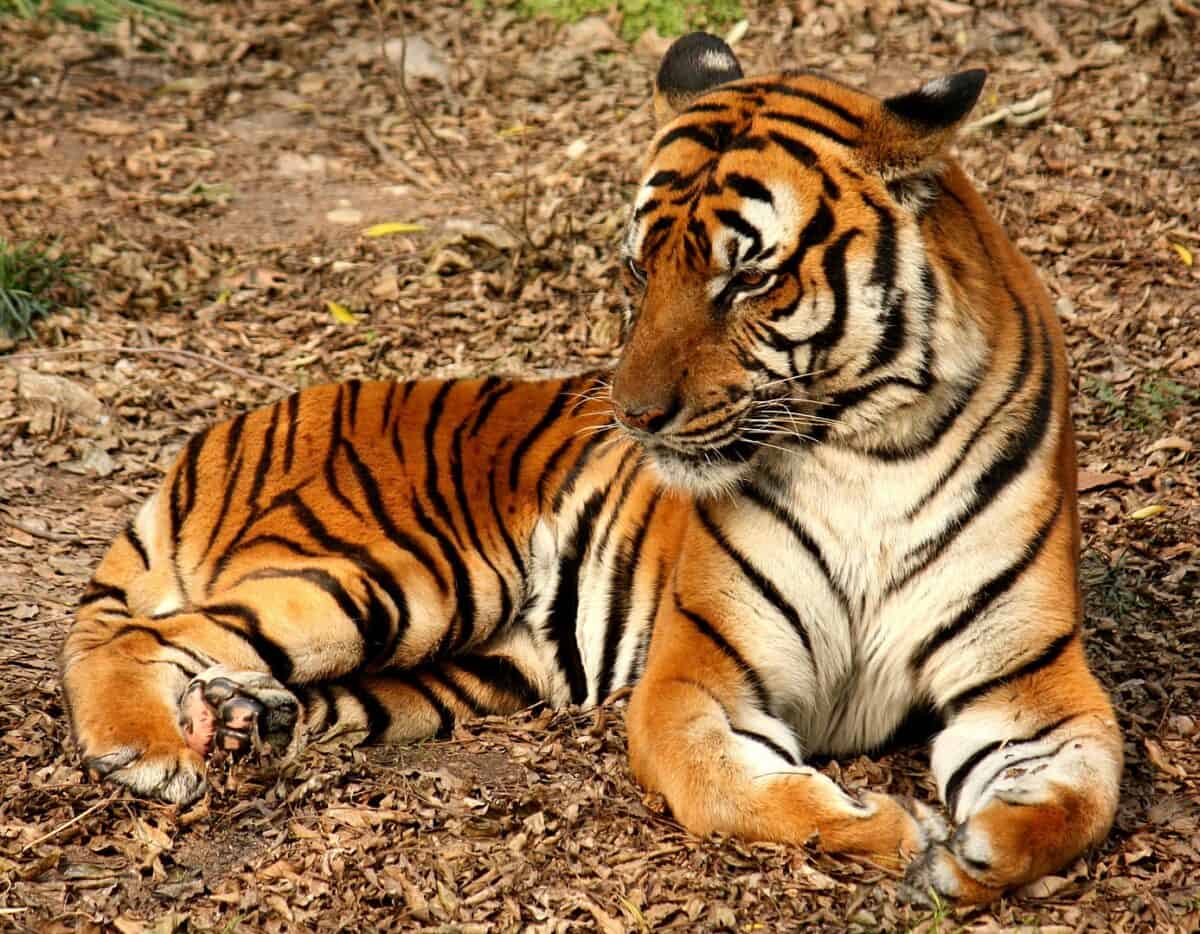
6. Red Panda
The Red Panda (Ailurus fulgens) is a charismatic and elusive mammal inhabiting China’s mountainous regions. Despite the name, this particular animal has no association with the Great Panda. Rather, it has a distinct appearance: vibrant reddish-brown fur, a masked face, and a long, bushy tail.
Moreover, significant threats endanger the Red Panda’s survival, including losing their homes and being hunted down by illegal animal hunters. Conservation efforts involve establishing protected areas and community-based initiatives to promote sustainable livelihoods while protecting the species’ habitats. Education and awareness programs are pivotal in engaging local communities and visitors in conserving this adorable bamboo eater.
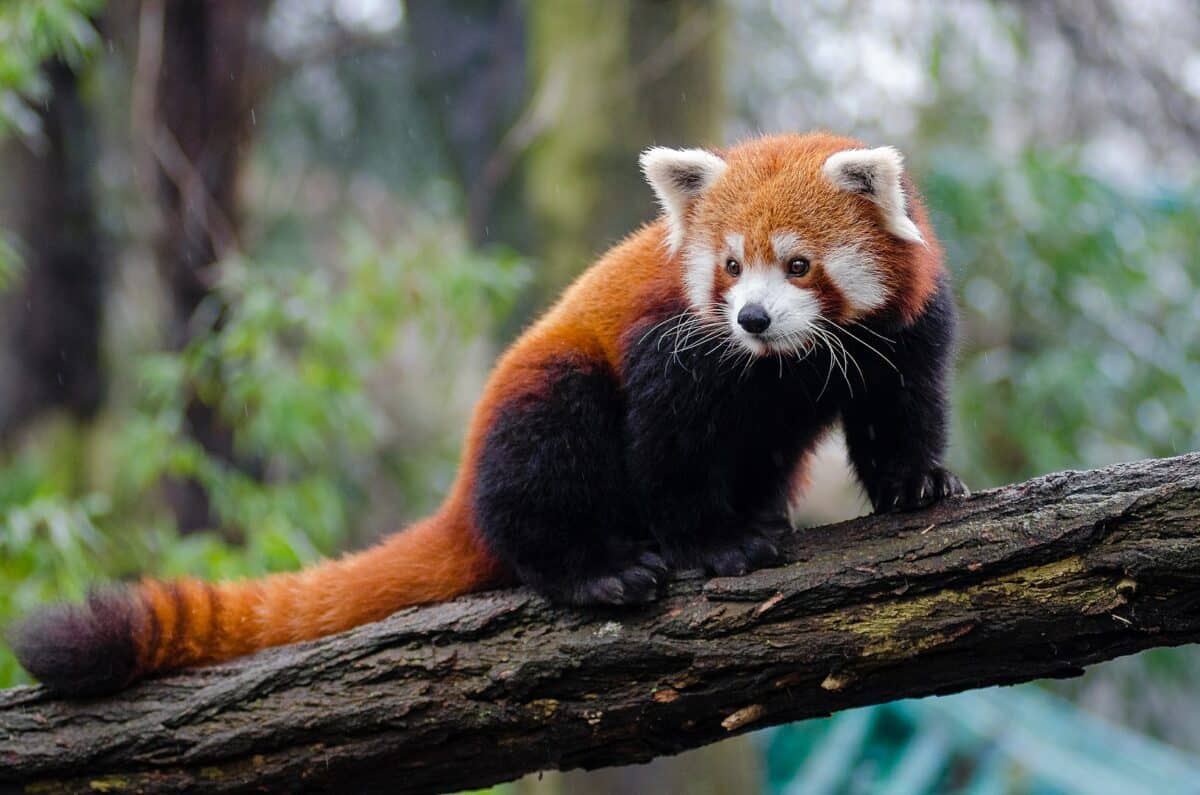
7. Asiatic Black Bear – A Symbol of Power and Vulnerability
The Asiatic Black Bear, also known scientifically as Ursus Thibetanus, is powerful and iconic and found in the forests of China. These bears have a distinctive V-shaped white or cream-colored chest mark, leading them to be labeled “Moon Bears”. They primarily inhabit mountainous regions and have a broad diet that includes fruits, insects, and small mammals.
Illegal trade of bear parts and other similar threats pose significant hazards to the Asiatic Black Bear. Conservation efforts involve establishing protected areas, anti-poaching measures, and promoting public awareness about protecting these majestic animals. Supporting organizations working on bear conservation and advocating for stricter wildlife protection laws are crucial steps in ensuring the survival of this species.

8. Sichuan Takin
The Sichuan Takin (Budorcas taxicolor tibetana) is an impressive herbivorous mammal native to the mountainous regions of China, particularly in Sichuan Province. This robust animal, known as the “goat-antelope,” has a stocky body, thick neck, and curved horns.
Although the Sichuan Takin is currently listed as vulnerable, its population has been relatively stable due to conservation efforts. These include establishing protected areas, habitat restoration, and captive breeding programs. Encouraging responsible tourism and supporting local communities that coexist with the Sichuan Takin is essential for its long-term survival.
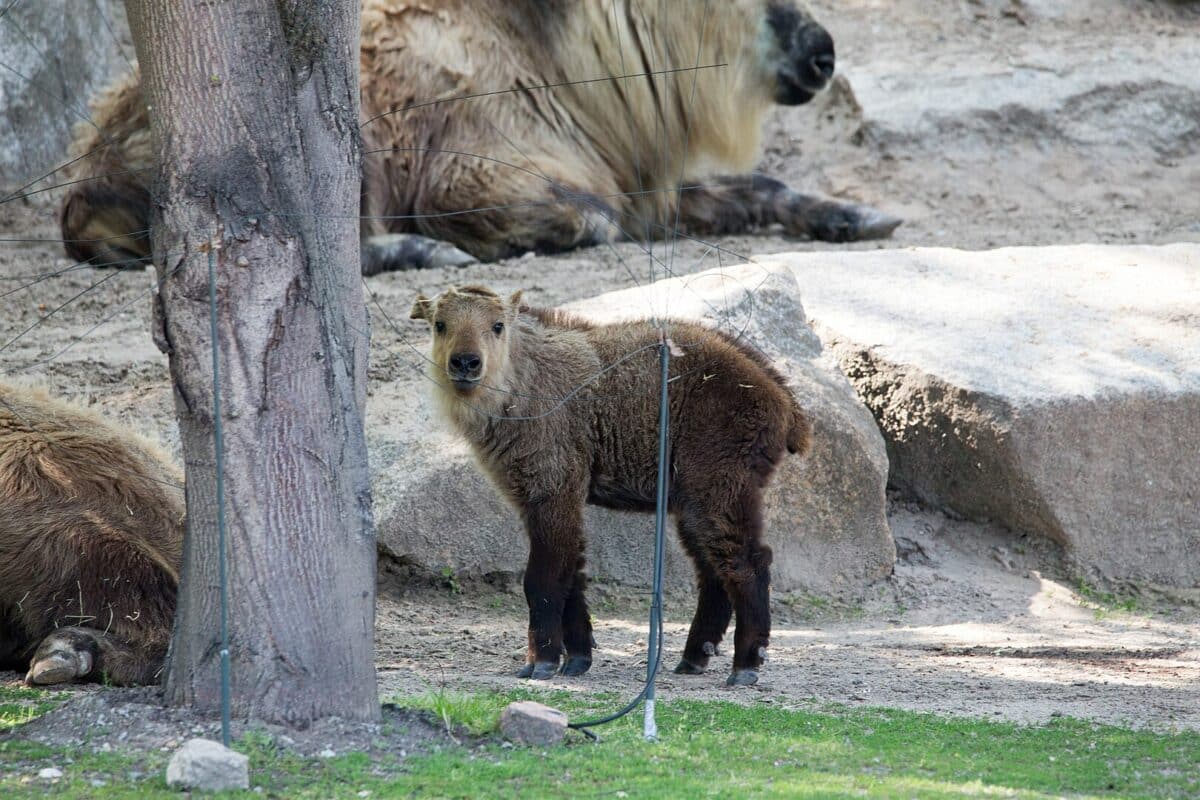
9. Chinese Giant Salamander
The Chinese Giant Salamander (Andrias davidianus) is a marvel of China’s wildlife. These extraordinary creatures can reach lengths of up to 5 feet and have a unique wrinkled appearance. Chinese Giant Salamanders are primarily aquatic, dwelling in rivers, streams, and underground caves.
Conservation efforts focus on habitat restoration, captive breeding, and strengthening law enforcement against illegal trade. Raising awareness about protecting this ancient amphibian wonder is crucial for its survival.

10. Asian Elephant
The Asian Elephant (Elephas maximus) holds immense cultural and ecological significance in China. These majestic gentle giants are primarily found in the country’s southern regions. Asian Elephants have a distinct appearance with large ears, a long trunk, and impressive tusks in males.
Conservation efforts in China focus on protected areas, habitat restoration, and community-based initiatives that promote coexistence with these magnificent creatures. Supporting organizations that work on elephant conservation and advocating for responsible tourism are essential in ensuring the survival of the Asian Elephant.

Frequently Asked Questions
Are there any other endangered animals in China?
Yes, China is home to several other endangered animals, including the Amur Leopard, Crested Ibis, Finless Porpoise, Chinese Pangolin, and the White-headed Langur.
How can visitors contribute to wildlife conservation efforts in China?
Visitors can support wildlife conservation efforts in China by choosing responsible tourism operators, avoiding activities that harm wildlife, and supporting local conservation initiatives and organizations through donations or volunteering.
What are some popular wildlife reserves to visit in China?
China has numerous wildlife reserves worth visiting, such as the Wolong National Nature Reserve (home to Giant Pandas), Jiuzhaigou Valley Nature Reserve, Wuyishan Nature Reserve, and the Baima Snow Mountain Nature Reserve.
The Bottom Line
China is home to a remarkable array of wildlife, with each animal on our top 10 list showcasing unique characteristics and captivating stories. From the iconic Giant Panda to the majestic South China Tiger, these animals have captured our imagination and become symbols of China’s natural heritage.
By valuing and preserving China’s wildlife, we contribute to biodiversity conservation and ensure a sustainable future for animals and humans. Let’s work together to safeguard these magnificent animals and maintain the delicate balance of nature for generations to come.
If you enjoyed this blog, read more on the Top 10 Animals of Death Valley, Top 10 Galápagos Islands Creatures, Journey of a Lifetime: Fan Xing, The Giant Panda’s Return to China and the Top 10 Animals in Yellowstone National Park
Join our Forum for free today!

- Usain Bolt vs. Peregrine Falcon – Speed Test in Their Domains - May 18, 2024
- Top 10 Animals in Yellowstone National Park - April 12, 2024
- Top 10 Omnivores - March 9, 2024

